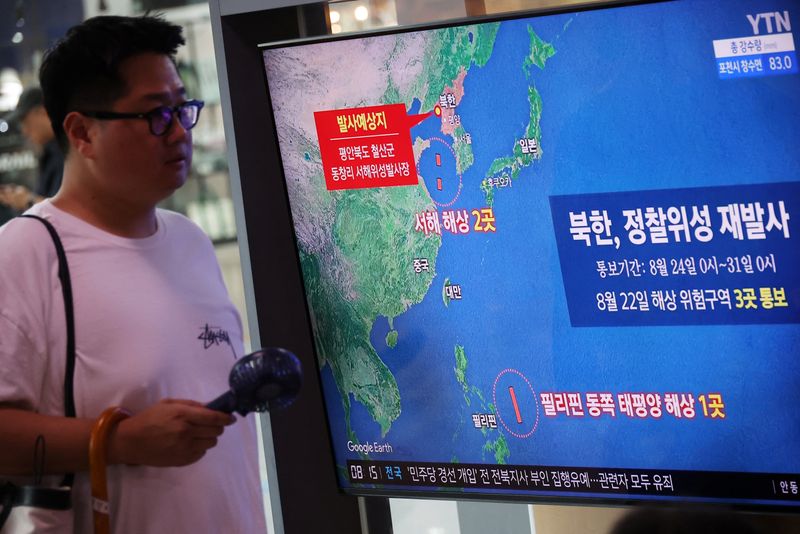By Hyonhee Shin, Soo-hyang Choi and Josh Smith
SEOUL (Reuters) - North Korea appears to have made progress in its space program, despite a second rocket failure on Thursday, but its unusually quick launch pace may be causing problems, analysts said.
North Korea's second attempt to place a spy satellite in orbit failed after the booster experienced a problem with its third stage, state media reported.
The launch came less than three months after the first flight of the Chollima-1 booster, and authorities vowed to try again in October.
"Putting the marker down for October is pretty gutsy," Jeffrey Lewis, a missile researcher at the James Martin Center for Nonproliferation Studies, said in a post on messaging platform X, formerly known as Twitter. "Can’t say I recall them being so specific before."
The North's scientists appear to have addressed the unstable fuel or engine problem that caused the first Chollima-1 to fail during its second stage.
Thursday's second flight was doomed instead by what state media said was a faulty "emergency blasting system" in the third stage, which analysts said could refer to a self-destruct system often installed in rockets to prevent large pieces of debris from raining down during an accident.
"The fact that they announced a third launch in October, which is quite immediate, could mean that there were no problems with the performance and separation of the first-, second- and third-stage rockets, and they have confirmed what's wrong with the emergency explosion device through telemetry data reception," said Chang Young-keun, a professor at Korea Aerospace University in South Korea.
The nuclear-armed North has said it wants a working system of spy satellites to monitor the U.S. and South Korean militaries, and analysts say the Chollima-1 has the potential to be a capable system.
But the short gap between launches suggests Pyongyang may be driven more by politics than operational goals, some observers said.
"The unusually fast-paced schedule suggests that the whole project was focused on highlighting Kim Jong Un's achievements, rather than actually putting an operating satellite in orbit," said Yang Uk, a fellow at the Asan Institute for Policy Studies in Seoul.
The first Chollima-1 launch on May 31 came just days after South Korea placed satellites into orbit for the first time with a domestically produced rocket, and officials in Seoul suggested at the time that North Korea had rushed to keep up.
South Korea scheduled nearly a year between each of the three launches of its new Nuri rocket, none of which failed as spectacularly as the North Korean attempts. North Korea plans to launch the Chollima-1 three times in less than six months.
Yang Moo-jin, a professor at the University of North Korean Studies in Seoul, said the October window could be the last chance for Kim to place a satellite in orbit this year.
"Given that a launch would be more difficult in the winter due to the speed and direction of the wind, October would be its last option to make tangible progress," he said.

On top of the weather and an unproven launcher, the satellite itself hasn't been tested in space yet, said Lee Choon-geun, a honorary research fellow at South Korea's Science and Technology Policy Institute.
"I am not sure if North Korean leadership knows the characteristics of large-scale science," he said. "They might fail again."